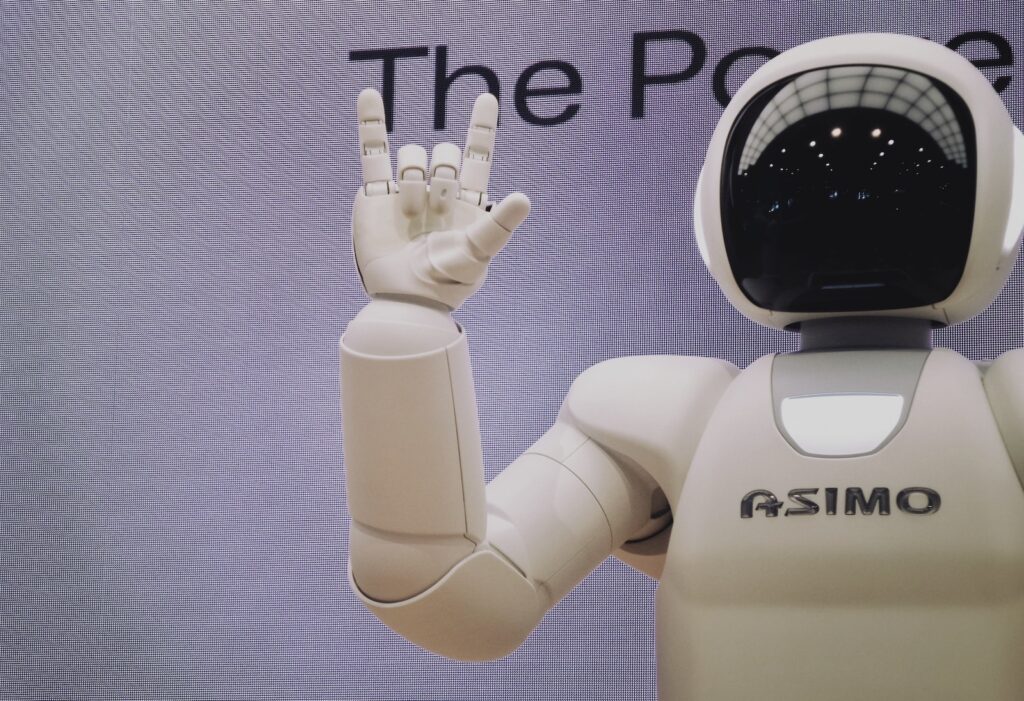So, you’ve probably heard the terms artificial intelligence and machine learning integration thrown around, especially when talking about big data and predictive analytics.
It’s no wonder people get confused because AI and ML are closely related but have some key differences.
Let’s start by saying that AI and ML have become super popular in the business world.
Companies are using these technologies to process and analyze massive amounts of data, make better decisions, get real-time recommendations and insights, and even predict the future with great accuracy.
But what’s the actual difference between ML and AI?
That’s where this post comes in.
We’ll talk about the essential aspects of artificial intelligence and machine learning integration, and see their use cases in different industry sectors.
Doing so will ensure clarity and perspective on AI and ML, to help us understand how both “divides” join hands.
Unlocking AI & ML Integration Insights

Artificial Intelligence (AI) and Machine Learning (ML) integration is a powerful concept that involves incorporating machine learning algorithms and AI techniques into various applications, systems, and processes to enhance their capabilities and intelligence.
It’s about creating systems that can learn from data, adapt to changing conditions, and make intelligent decisions without explicit programming.
Here’s what you should know about AI and ML integration:
Understanding AI and ML
Artificial Intelligence

Estimates indicate that the size of the worldwide artificial intelligence market is set to increase at a CAGR of 37.3% between 2023 and 2030, with a projected value of $1,811.8 billion by the year 2030.
Artificial Intelligence encompasses a wide-ranging domain that involves employing technology to create machines and computers capable of emulating cognitive functions linked to human intelligence.
These functions encompass various capacities such as visual perception, comprehension and interaction with spoken or written language, data analysis, offering suggestions, and other similar tasks.
While artificial intelligence is commonly perceived as a standalone entity, it actually constitutes a collection of technologies integrated within a system to grant it the capacity to think, learn, and take actions aimed at resolving intricate problems.
Machine Learning

The anticipated size of the global market for machine learning platforms is expected to reach $31.36 billion by the year 2028.
Machine learning falls under the umbrella of artificial intelligence and provides an automated means for a machine or system to enhance its performance through learning from experience.
In contrast to relying on direct programming, machine learning employs algorithms to scrutinize extensive datasets, extract knowledge from them, and subsequently arrive at informed judgments.
The efficacy of machine learning algorithms progressively enhances as they undergo training and encounter greater amounts of data.
The outcomes of this process are machine learning models, representing the insights gained from applying algorithms to training data.
Consequently, the more data utilized, the greater the refinement achieved in the model’s performance.
2. Integration in Applications
AI and ML can be integrated into various applications and systems, including
- Business Analytics: AI-powered analytics tools can analyze data to provide valuable insights, predict trends, and support data-driven decision-making.
- Customer Support: Chatbots and virtual assistants use AI to provide automated customer support and answer user queries.
- Healthcare: ML algorithms can analyze medical data to assist in diagnosing diseases, predicting patient outcomes, and recommending treatment plans.
- E-commerce: Recommendation systems powered by ML suggest products to users based on their preferences and browsing history.
- Autonomous Vehicles: AI and ML enable self-driving cars to perceive their surroundings, make decisions, and navigate safely.
3. Data is Key
AI and ML heavily rely on data. Quality and quantity of data directly impact the performance of ML algorithms.
Proper data collection, preprocessing, and labelling are essential for successful integration.
4. Training and Model Building
ML models require training using labelled data. During training, the model learns patterns and relationships in the data to make predictions or decisions.
The trained model is then deployed for inference on new, unseen data.
5. Continuous Learning
One of the strengths of ML is its ability to learn from new data.
Models can be fine-tuned and updated with fresh data to improve accuracy and adapt to changing conditions.
6. Challenges and Considerations:
- Data Privacy: Integrating AI and ML involves handling sensitive data, and raising privacy concerns that need to be addressed.
- Bias and Fairness: AI models can inherit biases from training data, resulting in biased decisions. Ensuring fairness and addressing bias is crucial.
- Interpretability: As models become more complex, understanding their decision-making process can be challenging. Interpretable AI is a growing concern.
- Resource Requirements: ML models may require significant computational resources and storage, which impacts system design and scalability.
7. Frameworks and Tools:
Several frameworks and tools are available for AI and ML integration, including TensorFlow, PyTorch, sci-kit-learn, and more.
These tools provide libraries and APIs for building, training, and deploying models.
8. AI and Human Collaboration:
AI and ML integration should enhance human capabilities, not replace them.
Collaboration between AI systems and humans is crucial to ensure the right balance and effective decision-making.
Connection Between Artificial Intelligence and Machine Learning
Wondering what is ai vs machine learning?
Here’s all you need to know about ai vs machine learning.
AI and ML are closely connected, but they’re not exactly the same thing.
Let me break it down for you.
AI is all about making machines or systems act like humans, whether it’s sensing, reasoning, acting, or adapting.
On the other hand, ML is a specific application of AI that focuses on machines learning from data and extracting knowledge from it without human intervention.
Here’s a helpful way to remember the difference: AI is like a big umbrella that covers all kinds of specific approaches and algorithms.
Machine learning is just one of those approaches.
There are other subfields under that umbrella, like deep learning, robotics, expert systems, and natural language processing.
Think of it this way – AI is the big picture, and ML is just a piece of that puzzle.
It’s like saying AI is the whole cake, and ML is one slice of that cake.
Both are important, but ML is specifically focused on machines learning from data.
Artificial Intelligence and Machine Learning In Financial Services
AI and ML are reshaping the financial services industry by improving efficiency, customer experiences, and decision-making processes.
Despite the benefits, careful consideration of data quality, bias, regulatory compliance, and interpretability is essential to harness their potential effectively.
The ongoing development of AI and ML technologies will continue to drive innovation in financial services.
Here are some of the popular use cases, benefits and limitations of artificial intelligence and machine learning in financial services:
Use Cases
1. Fraud Detection and Prevention
AI and ML algorithms can analyze vast amounts of transaction data to identify patterns indicative of fraudulent activities.
These systems can learn from historical data and detect anomalies in real time, enabling quick action to prevent financial losses.
2. Algorithmic Trading
AI-powered trading algorithms can analyze market trends, news, and historical data to make rapid trading decisions.
Machine learning models can adapt to changing market conditions and optimize trading strategies for better returns.
3. Credit Scoring and Risk Assessment
AI can assess a borrower’s creditworthiness by analyzing their financial history, transaction behaviour, and alternative data sources.
ML models can provide more accurate risk assessments and pricing for loans.
4. Customer Service and Chatbots
Virtual assistants and chatbots use AI to interact with customers, answer queries, and provide personalized recommendations.
They enhance customer experience by offering round-the-clock assistance and quick responses.
5. Personalized Financial Advice
AI-driven robo-advisors analyze clients’ financial situations and goals to recommend personalized investment strategies.
These platforms provide cost-effective investment advice and portfolio management.
6. Anti-Money Laundering (AML) Compliance
AI systems can analyze large volumes of transaction data to identify suspicious activities and potential money laundering schemes.
They assist financial institutions in meeting regulatory compliance requirements.
Benefits
Let’s have a look at some of the benefits of artificial intelligence and machine learning in financial services.
1. Efficiency and Automation
One of the benefits of artificial intelligence and machine learning training is improved efficiency and automation.
AI and ML streamline manual processes, reduce human error, and automate repetitive tasks, leading to operational efficiency and cost savings.
2. Data-Driven Insights
Another benefit of artificial intelligence and machine learning training is data-driven insights.
These technologies can process vast amounts of data to extract insights that inform business decisions, investment strategies, and risk assessments.
3. Real-Time Analysis

AI systems can process data in real time, allowing financial institutions to respond quickly to market changes, fraud attempts, and customer demands.
4. Personalization
AI enables personalized customer experiences, offering tailored recommendations, investment advice, and financial products based on individual preferences and behaviours.
5. Risk Management
ML models enhance risk assessment accuracy by analyzing a broader range of variables, leading to more informed lending and investment decisions.
Limitations
Here are a few limitations when it comes to artificial intelligence and machine learning integration in financial services.
1. Data Quality and Bias
AI and ML systems heavily rely on data quality. Biased or incomplete data can lead to skewed results and decisions.
2. Complexity and Interpretability
Advanced AI models, such as deep learning, can be complex and challenging to interpret. Understanding their decision-making process can be difficult.
3. Regulatory Challenges
Financial services are heavily regulated. Implementing AI systems that adhere to regulations and compliance standards can be complex.
4. Dependency on Historical Data
ML models learn from historical data. If market conditions change drastically, models may not perform as expected.
5. Lack of Human Touch
While automation improves efficiency, some customers may prefer human interactions for complex financial decisions.
Inspiring AI & ML Examples

In the survey, it was found that 63% of the participating companies have intentions to either maintain or boost their investments in AI and machine learning throughout the year 2023.
There are numerous inspiring examples of Artificial Intelligence (AI) and Machine Learning (ML) applications across various industries that showcase the potential of these technologies.
Here are some popular examples to draw inspiration from
1. Healthcare
- IBM Watson for Oncology: One artificial intelligence and machine learning example is IBM Watson.
It is an AI-powered system that assists doctors in diagnosing and treating cancer by analyzing vast amounts of medical literature and patient data.
- Google’s DeepMind: Used for medical image analysis and early detection of diseases like diabetic retinopathy.
2. Finance
- JPMorgan Chase’s COIN: Uses AI to review legal documents and extract critical information, reducing manual review time significantly.
- PayPal Fraud Detection: Utilizes ML algorithms to detect fraudulent transactions and prevent unauthorized activities.
3. Retail and E-commerce
- Amazon’s Recommendation Engine: Suggests products based on user behaviour and purchase history, enhancing personalized shopping experiences.
- Chatbots for Customer Support: Retailers like Sephora use chatbots to provide instant assistance and recommendations to online shoppers.
4. Manufacturing and Industry
- Predictive Maintenance: Manufacturers use ML algorithms to predict equipment failures, optimise maintenance schedules and reduce downtime.
- Quality Control: AI-powered visual inspection systems can identify defects in products on the production line.
5. Autonomous Vehicles
- Tesla’s Autopilot: Uses AI for self-driving features, analyzing data from sensors to navigate and control the vehicle.
- Waymo (Google’s Self-Driving Car Project): Utilizes AI and ML for real-time decision-making while navigating complex traffic scenarios.
6. Natural Language Processing (NLP)
Anticipated expansion is foreseen in the global natural language processing market, with its value projected to increase from $26.42 billion in 2022 to around $161.81 billion by the year 2029.
- Google’s BERT: Improves search engine understanding of context and user intent, leading to more relevant search results.
- OpenAI’s GPT-3: Generates human-like text and enables various applications like chatbots, content generation, and language translation.
7. Entertainment and Content Creation
- Netflix Recommendation System: A famous artificial intelligence and machine learning example is Netflix’s recommendation system.
It suggests movies and TV shows based on users’ watching history and preferences.
- Artificial Intelligence in Video Games: AI-driven NPCs (non-playable characters) adapt to player behaviour, enhancing gameplay experiences.
8. Energy and Sustainability
- Smart Grids: AI optimizes energy distribution in smart grids, minimizing energy wastage and reducing costs.
- Renewable Energy Forecasting: AI predicts energy generation from renewable sources, aiding in efficient grid management.
9. Agriculture
- Precision Farming: AI analyzes data from sensors, drones, and satellites to optimize crop planting, irrigation, and resource management.
- Plant Disease Detection: AI-enabled image analysis identifies diseases in crops, enabling timely intervention.
10. Education
- Personalized Learning Platforms: AI adapts educational content to individual student learning styles and progress.
- Language Learning Apps: AI-powered apps like Duolingo provide interactive language lessons and adapt difficulty levels.
Elevate Your Business with Tailored Software Solutions

1. Empowering Success Through Custom Software Development
Are off-the-shelf software solutions falling short of meeting your business’s unique requirements?
Look no further.
BlueZorro presents custom software development managed services that are meticulously crafted to drive your success.
Backed by a team of industry veterans, we understand the pulse of your needs and are dedicated to not just meeting them, but surpassing your highest expectations.
Let our suite of custom software development services propel you to a level of distinction—forge a partnership with BlueZorro today!
2. Your Path to Exceptional Software Development and Solution Implementation
Step into the realm of unparalleled software solutions with BlueZorro as your trusted partner.
We pledge a calibre of bespoke solutions that are marked by unparalleled attention to detail.
What truly sets us apart, however, is our managed services model, designed to provide you with an experience that outshines the ordinary.
3. Navigating Your Custom-Tailored Solutions
Software Development Solutions: Your business deserves solutions as unique as its fingerprint.
Our tailor-made software development services are designed to cater precisely to your needs, setting the stage for a remarkable transformation.
Custom Product Development: Unleash the potential of your ideas with our custom product development expertise.
Witness your concepts come to life as we craft solutions tailored to your specifications.
Solution Implementation: Bridging the gap between concept and reality, our solution implementation strategies ensure the seamless integration of our custom solutions into your business ecosystem.
4. Your Vision, Our Expertise: Personalized Software Development Services
At BlueZorro, we’re not just service providers; we’re partners in your journey towards excellence.
Our team of seasoned experts is dedicated to delivering the custom software development managed services you’ve been tirelessly seeking.
Your unique aspirations deserve an equally unique approach, and that’s precisely what we offer. Contact us today to find out more!

